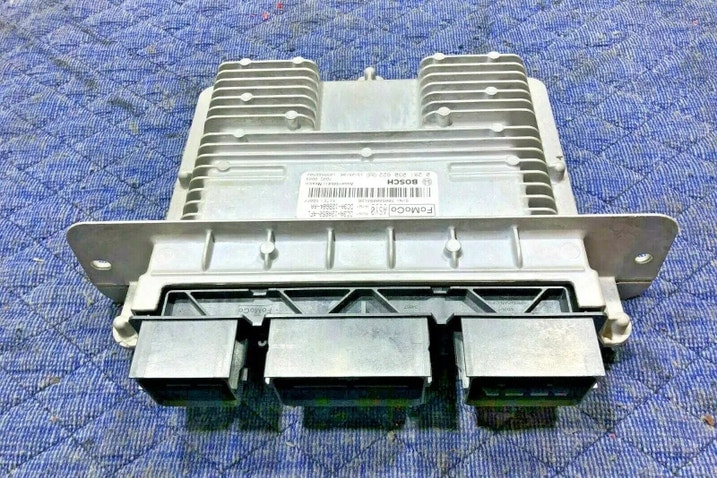The powertrain control module, or PCM, is the brain of your car's powertrain. The PCM integrates the functions of the engine and transmission control modules. This improves performance, fuel efficiency and your car's emissions control system.
Importance of the PCM in modern vehicles
The PCM plays a comprehensive role in managing the engine and transmission in modern vehicles. Like an orchestra conductor, this component regulates just about everything going on under the hood, including fuel injection, ignition timing and air-to-fuel ratios. The PCM also contributes to your car's overall driveability by controlling automated traction and onboard climate controls. A broken or malfunctioning PCM can create significant performance issues, such as reduced fuel efficiency and increased emissions.
Overview of PCM
Functionality
The PCM monitors and controls several important functions inside a car's powertrain. It takes in data from multiple sensors distributed throughout the vehicle, processes this information at a high level, and sends relevant commands to small machines called actuators to adjust vehicle operations accordingly. For example, the PCM can modify the fuel injection rate, adjust the ignition timing, or alter the transmission's shift points to optimize performance and efficiency.
Control over various aspects of the powertrain system
The PCM's role extends beyond engine management. It also oversees the transmission so that gear shifts go smoothly and happen at the appropriate times.
But the PCM doesn't work in isolation. It communicates with other electronic control units within the vehicle, such as the body control module, the antilock braking system module, traction control and even the climate control. This networking pulls vehicle systems together and helps them operate harmoniously via constant small adjustments. The alternative is to set each component to its own tolerances, hope they work together, and gradually let them drift out of spec and impair the car's operation.
Components
Sensors and actuators connected to PCM
To do what it does, the PCM works through various sensors to gather data about your car's operating conditions. These sensors monitor parameters such as engine speed, coolant temperature, throttle position and oxygen levels in the exhaust. Actuators make adjustments in response to the sensor data from the PCM. These systems include fuel injectors, ignition coils and transmission solenoids.
Placement within the vehicle
The PCM is typically located in a protected area within the vehicle, such as under the dashboard, beneath the passenger seat, or in the engine compartment. Its placement is meant to shield it from temperature, moisture and extreme vibrations.
Accessibility for maintenance and repairs
Despite its protected placement, the PCM is also designed to be accessible for maintenance and repairs. This is important because a faulty PCM can trigger a host of issues, including the illumination of the check engine light, reduced fuel efficiency and generally poor engine performance. Modern diagnostic tools allow mechanics to read the trouble codes and identify issues with the PCM.
PCM vs. ECM
While the PCM and engine control module (ECM) are closely related, they are not the same. The ECM specifically manages engine operations, while the PCM integrates the functions of the ECM and the transmission control module. Think of the ECM as a specialist, like an HR manager, while the PCM is more like a general director who oversees the whole operation.
The PCM has a broader scope of control compared to the ECM. In addition to managing the engine, it also controls transmission operations and coordinates with other vehicle systems to ensure overall performance and safety. This integrated approach allows for more efficient and harmonious vehicle operation.
Maintaining the PCM
Maintaining the PCM in good working order matters for the longevity and performance of your car. Regular maintenance includes keeping the PCM's electrical connections clean and secure, ensuring the sensors and actuators it relies on are functioning correctly and addressing any issues promptly when the check engine light comes on. If you experience symptoms of a bad PCM, such as erratic engine behavior, poor fuel economy or trouble starting the ignition, it needs to be checked out by a qualified mechanic and replaced as soon as possible.


 by
by  edited by
edited by 
